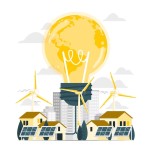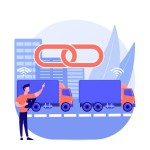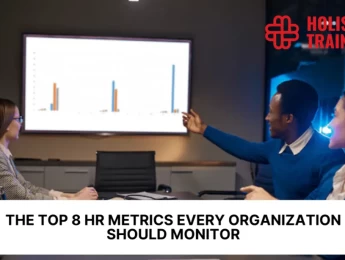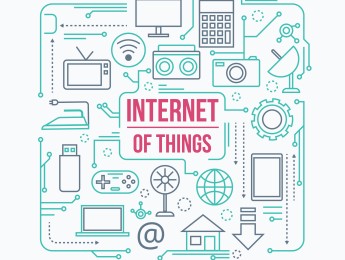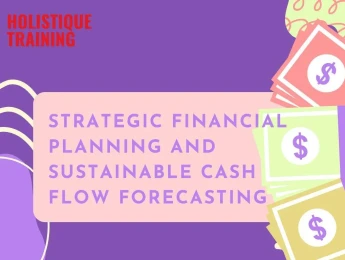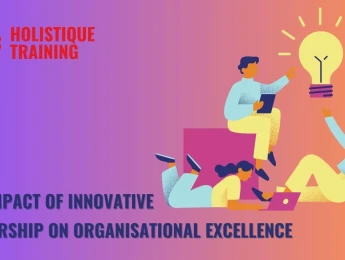- Table of Contents
- Introduction
- What is Jevons Paradox?
- Jevons Paradox: Then vs. Now
- How Does Jevons Paradox Affect Economic Development?
- 1. Resource Allocation and Economic Growth
- 2. Impact on Developing Economies
- 3. Policy Implications and Regulatory Challenges
- 4. Consumer Behavior and Demand Dynamics
- 5. Technological Innovation and Market Dynamics
- 6. Long-Term Sustainability Goals
- 7. Globalization and Resource Competition
- Jevons Paradox and AI
- 1. Efficiency Gains through AI
- 2. Increased Demand for Computational Resources
- 3. Behavioral Changes Driven by AI
- 4. Smart Technologies and Increased Consumption
- 5. AI in Resource Management
- 6. Economic Implications of AI Adoption
- 7. Policy and Regulatory Challenges
- 8. Long-Term Sustainability Goals
- How to Implement Jevons Paradox in Sustainability Strategies
- 1. Holistic Policy Design
- 2. Consumer Education and Awareness
- 3. Incentivizing Sustainable Behavior
- 4. Monitoring and Evaluation
- 5. Integrating Technology with Sustainability Goals
- 6. Collaboration Across Sectors
- 7. Adopting Circular Economy Principles
- 8. Encouraging Behavioral Change through Nudges
- Areas Where Jevons Paradox Can Be Used Most
- Energy Sector
- Transportation
- Manufacturing and Industry
- Agriculture
- Building and Construction
- Consumer Goods and Electronics
- Water Management
- Urban Planning
- Conclusion
Introduction
The intricate relationship between resource efficiency and consumption patterns has long fascinated economists, environmentalists, and policymakers alike. One particularly intriguing concept that encapsulates this dynamic is Jevons Paradox. This blog post delves deep into Jevons Paradox, exploring its historical context, implications for modern economic development, and its relevance in the age of artificial intelligence. Additionally, we will discuss strategies for implementing this paradox in sustainability initiatives and identify key areas where it can be most effectively applied. By the end of this exploration, readers will gain a comprehensive understanding of Jevons Paradox and its significance in fostering sustainable growth in an increasingly resource-constrained world.
What is Jevons Paradox?
Jevons Paradox, named after the British economist William Stanley Jevons, emerges from his observation in 1865 that as technological improvements increase the efficiency with which a resource is used, the overall consumption of that resource can actually increase rather than decrease. This counterintuitive phenomenon occurs because enhanced efficiency often leads to lower costs, which can stimulate demand and ultimately result in greater consumption.
To illustrate, consider the example of coal. Jevons noted that as steam engines became more efficient, the cost of using coal decreased, leading to an increase in coal consumption across various industries. Instead of conserving resources, the very advancements meant to promote sustainability can inadvertently encourage greater usage. This paradox challenges traditional notions of resource conservation and highlights the complexities of human behavior in response to economic incentives.
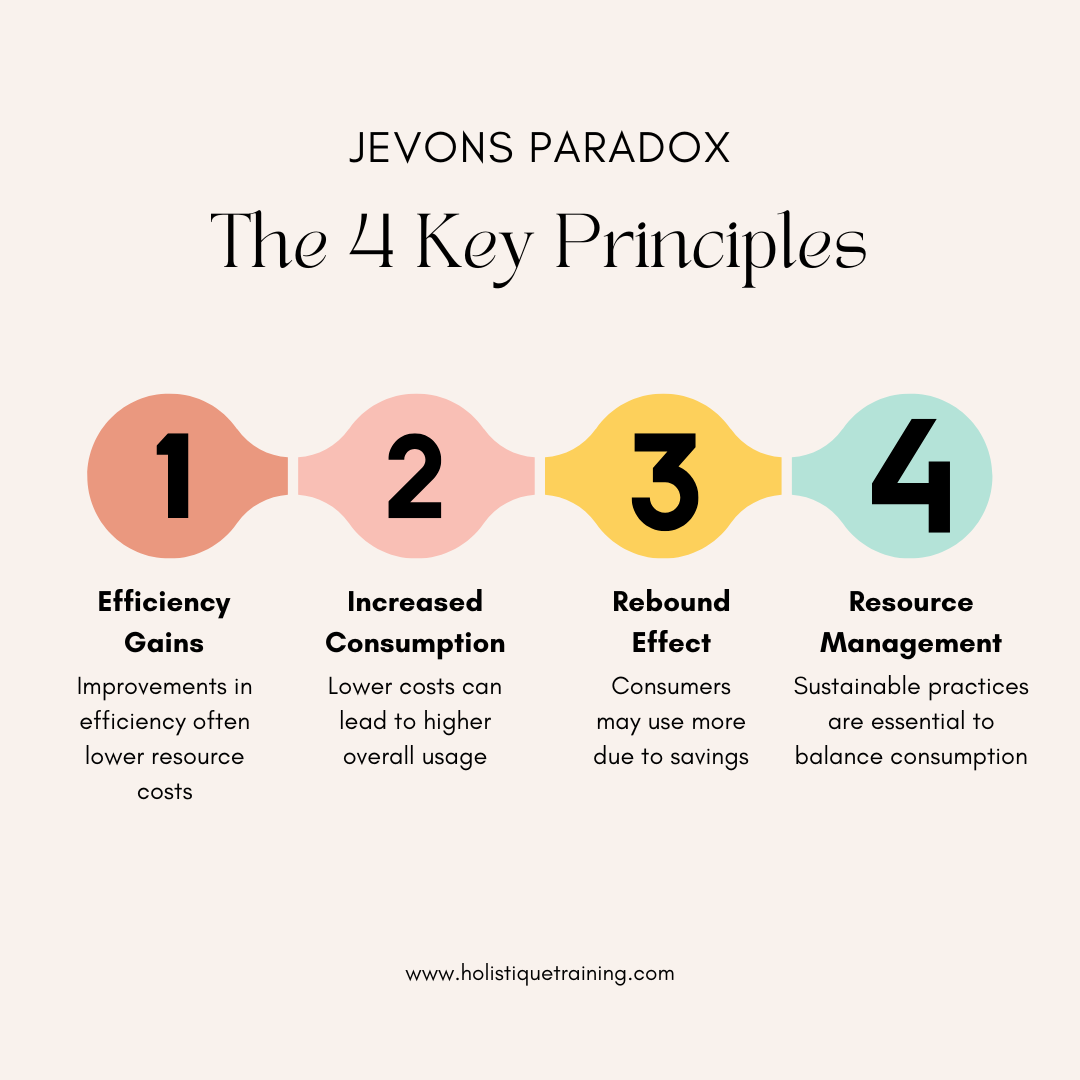
Jevons Paradox: Then vs. Now
Historically, Jevons Paradox was primarily discussed in the context of fossil fuels, particularly coal. Since Jevons's time, the industrial revolution has seen numerous advancements in energy efficiency across various sectors. However, the underlying principle of the paradox remains relevant today, especially as we grapple with modern energy sources and technologies.
In contemporary society, advancements in energy-efficient appliances, vehicles, and industrial processes are commonplace. For instance, the development of LED lighting has significantly reduced the energy required for illumination. However, as households and businesses adopt these technologies, the overall demand for electricity has surged due to increased usage and the proliferation of electronic devices. This modern manifestation of Jevons Paradox underscores the need for a nuanced approach to energy efficiency—one that considers both technological improvements and behavioral responses.
The digital age has also introduced new complexities to the paradox. The rise of the internet and smart technologies has facilitated unprecedented access to information and services, often leading to increased consumption. For example, while telecommuting reduces the need for commuting, it can also encourage individuals to spend more time using energy-intensive devices at home. Thus, understanding the interplay between efficiency and consumption in today's context is crucial for developing effective sustainability strategies.
Aspect | Then (1865) | Now (2025) |
Primary Resource | Coal | Electricity, digital resources |
Efficiency Improvements | Steam engine efficiency | Energy-efficient appliances, AI |
Consumption Impact | Increased coal consumption | Increased overall energy usage |
Technological Context | Industrial Revolution | Digital Age, Smart Technologies |
Economic Drivers | Industrial growth, cost reduction | E-commerce, convenience, automation |
Environmental Awareness | Minimal awareness | Growing focus on sustainability |
Policy Responses | Limited regulation | Comprehensive sustainability policies |
Behavioral Insights | Little understanding | Increased focus on consumer behavior |
How Does Jevons Paradox Affect Economic Development?
The implications of Jevons Paradox extend far beyond environmental concerns; they significantly influence economic development across various dimensions. As nations strive for growth, they often prioritize efficiency improvements as a means to enhance productivity and competitiveness. However, the paradox suggests that without careful management, these efficiency gains can lead to increased consumption, potentially undermining sustainability goals. Here are several key points that elaborate on this relationship:
1. Resource Allocation and Economic Growth
Efficiency improvements can lead to a reallocation of resources within an economy. When industries become more efficient, they may experience lower operational costs, which can result in increased profits. These profits can be reinvested into further expansion, leading to increased production and, consequently, higher overall consumption of resources. For example, a manufacturing sector that adopts advanced technologies may produce goods more efficiently, but this can also lead to a surge in demand for those goods, ultimately increasing resource consumption.
2. Impact on Developing Economies
For developing economies, the challenge of Jevons Paradox is particularly pronounced. As these nations industrialize and seek to improve living standards, the drive for efficiency can inadvertently lead to higher resource consumption. This is evident in countries that have adopted advanced technologies to boost agricultural productivity. While these innovations can enhance yields, they can also lead to increased land use and resource depletion if not managed sustainably. The paradox underscores the need for developing nations to balance efficiency gains with sustainable practices to avoid long-term resource scarcity.
3. Policy Implications and Regulatory Challenges
Jevons Paradox raises critical questions about the effectiveness of policies aimed at promoting energy efficiency. For instance, subsidies for energy-efficient appliances may encourage consumers to purchase more devices, ultimately offsetting the intended environmental benefits. Policymakers must therefore consider the broader economic context and potential behavioral responses when designing interventions aimed at promoting sustainability. Regulatory frameworks that fail to account for the paradox may inadvertently encourage practices that lead to greater resource consumption rather than conservation.
4. Consumer Behavior and Demand Dynamics
Understanding consumer behavior is essential in the context of Jevons Paradox. As efficiency improves, consumers may change their purchasing habits, leading to increased overall consumption. For example, as electric vehicles become more affordable and efficient, consumers may be encouraged to drive more frequently or purchase additional vehicles. This shift in behavior can counteract the environmental benefits associated with improved efficiency. Therefore, addressing consumer behavior through education and awareness campaigns is crucial for mitigating the effects of Jevons Paradox.
5. Technological Innovation and Market Dynamics
The relationship between technological innovation and market dynamics is central to understanding Jevons Paradox. As new technologies emerge, they often disrupt existing markets and create new demand. For instance, the rise of smart home technologies has increased energy efficiency in households but has also led to higher energy consumption due to increased use of electronic devices. This dynamic highlights the importance of considering the broader market implications of technological advancements and their potential to exacerbate resource consumption.
6. Long-Term Sustainability Goals
Ultimately, Jevons Paradox poses significant challenges to achieving long-term sustainability goals. As economies grow and evolve, the focus on efficiency must be balanced with strategies that promote responsible consumption. This includes implementing measures that encourage sustainable practices, such as circular economy principles and resource conservation initiatives. By integrating sustainability into economic development strategies, policymakers can work to mitigate the unintended consequences of efficiency gains and foster a more sustainable economic future.
7. Globalization and Resource Competition
Globalization has intensified competition for resources, making the implications of Jevons Paradox even more critical. As countries strive to enhance their competitiveness on the global stage, they may prioritize efficiency improvements in various sectors. However, this can lead to increased resource extraction and consumption, exacerbating environmental degradation. The paradox serves as a reminder that while pursuing economic growth, nations must also consider the long-term viability of their resource base and the potential consequences of increased consumption.
In summary, Jevons Paradox has profound implications for economic development, influencing resource allocation, consumer behavior, and policy design. As nations seek to enhance efficiency and competitiveness, it is essential to recognize the potential for increased consumption that accompanies these gains. By adopting a holistic approach that integrates sustainability into economic strategies, policymakers can work to navigate the complexities of Jevons Paradox and foster a more sustainable future.
Jevons Paradox and AI
The advent of artificial intelligence (AI) presents both challenges and opportunities in the context of Jevons Paradox. As organizations increasingly leverage AI technologies to enhance efficiency across various sectors, the paradox reveals the potential for increased resource consumption despite improvements in efficiency. Here are several key points that elaborate on this relationship:
1. Efficiency Gains through AI
AI has the potential to drive significant efficiency improvements in numerous industries. For example, in manufacturing, AI-driven automation can optimize production processes, reduce waste, and enhance supply chain management. In the energy sector, AI algorithms can predict energy demand more accurately and manage resources more effectively, leading to lower operational costs. However, these efficiency gains can lead to increased production and consumption, as businesses may choose to expand their operations or offer more services due to lower costs.
2. Increased Demand for Computational Resources
The deployment of AI systems often requires substantial computational power, which can lead to increased energy consumption. In fact,as of 2023, prior to the significant surge in AI development, the International Energy Agency estimated that data centers were responsible for approximately1–1.5% of global electricity consumption and contributed around 1% of the world's energy-related CO₂ emissions.Training large AI models involves processing vast amounts of data, necessitating high-performance computing infrastructure that consumes significant energy. For instance, data centers housing AI systems require cooling and power, contributing to overall energy demand. As organizations adopt AI technologies to improve efficiency, they must also consider the environmental impact of the energy used in AI operations.
3. Behavioral Changes Driven by AI
AI technologies can influence consumer behavior in ways that exacerbate Jevons Paradox. For example, AI-powered recommendation systems in e-commerce can lead to increased consumption by encouraging users to purchase more items based on personalized suggestions. Similarly, AI-driven marketing strategies can create a sense of urgency and convenience, prompting consumers to buy more frequently. These behavioral shifts can counteract the intended benefits of efficiency improvements, resulting in higher overall resource use.
4. Smart Technologies and Increased Consumption
The rise of smart technologies, powered by AI, has transformed various aspects of daily life, from smart homes to smart cities. While these technologies can enhance efficiency—such as optimizing energy usage in homes—they can also lead to increased consumption.Studies indicate that smart home technologies can reduce overall energy consumption by 15-30%. However, smart home devices may encourage users to leave appliances on longer or increase the use of energy-intensive devices, ultimately resulting in higher energy bills and greater resource consumption. This highlights the need for a balanced approach that promotes responsible usage alongside efficiency improvements.
5. AI in Resource Management
AI can play a crucial role in managing resources more sustainably. For example, AI systems can optimize water usage in agriculture, monitor air quality, and predict environmental changes. However, the effectiveness of these applications is contingent upon how they are implemented. If not carefully managed, the efficiencies gained through AI in resource management can lead to increased exploitation of natural resources. Policymakers and organizations must ensure that AI applications align with sustainability goals to avoid exacerbating the effects of Jevons Paradox.
6. Economic Implications of AI Adoption
The economic implications of AI adoption are significant, as businesses may experience lower costs and increased productivity. However, this can lead to a paradoxical situation where the overall demand for resources rises. For instance, as companies adopt AI technologies to enhance efficiency, they may scale their operations, resulting in higher overall consumption of materials and energy. In fact, a report fromPwC found that AI could contribute up to $15.7 trillion to the global economy by 2030, which may further intensify resource demand. This dynamic underscores the importance of considering the broader economic context when implementing AI solutions.
7. Policy and Regulatory Challenges
The integration of AI into various sectors raises important policy and regulatory challenges. As organizations leverage AI to improve efficiency, regulators must ensure that these advancements do not lead to unintended consequences, such as increased resource consumption. Policymakers should consider frameworks that promote sustainable AI practices, encouraging organizations to prioritize energy-efficient systems and responsible resource management.
8. Long-Term Sustainability Goals
Ultimately, the relationship between AI and Jevons Paradox poses significant challenges to achieving long-term sustainability goals. While AI has the potential to drive efficiency and innovation, it is essential to balance these advancements with strategies that promote responsible consumption. This includes developing AI technologies that are designed with sustainability in mind, ensuring that efficiency gains do not come at the expense of resource conservation.
In summary, the intersection of Jevons Paradox and AI highlights the complexities of efficiency and consumption in the modern economy. As organizations harness AI to enhance productivity and reduce costs, they must remain vigilant about the potential for increased resource consumption. By adopting a holistic approach that integrates AI advancements with sustainability principles, businesses and policymakers can work to navigate the challenges posed by Jevons Paradox and foster a more sustainable future.
How to Implement Jevons Paradox in Sustainability Strategies
Addressing Jevons Paradox requires a multifaceted approach that integrates efficiency improvements with behavioral insights and policy interventions. To effectively implement strategies that account for Jevons Paradox within sustainability initiatives, organizations and policymakers must consider various dimensions. Here are several key points that elaborate on how to implement these strategies effectively:
1. Holistic Policy Design
A comprehensive policy design is essential for addressing the complexities of Jevons Paradox. Policymakers should adopt an integrated approach that considers both supply-side and demand-side factors. For example, while promoting energy-efficient technologies, they should also implement measures that curb excessive consumption. This could involve setting consumption limits, introducing tiered pricing models for energy use, or creating regulations that promote sustainable consumption practices. By aligning policies with sustainability goals, governments can mitigate the unintended consequences of efficiency gains.
2. Consumer Education and Awareness
Raising awareness about the implications of efficiency gains is crucial in combating Jevons Paradox. Educational campaigns can inform consumers about how increased efficiency may lead to greater consumption if not managed properly. For instance, public awareness initiatives can highlight the environmental impact of overconsumption and encourage individuals to adopt more sustainable practices. By empowering consumers with knowledge, organizations can foster a culture of sustainability that prioritizes responsible resource use.
3. Incentivizing Sustainable Behavior
Implementing incentives for sustainable consumption can counteract the effects of Jevons Paradox. Governments and organizations can offer rewards for reduced energy use, promote energy-efficient practices, or provide subsidies for sustainable products. For example, programs that encourage consumers to engage in energy-saving behaviors—such as turning off lights when not in use or using public transportation—can help align individual actions with broader sustainability goals. Additionally, creating loyalty programs that reward sustainable purchases can further incentivize responsible consumption.
4. Monitoring and Evaluation
Establishing robust monitoring frameworks to assess the impact of efficiency initiatives is essential for understanding the effects of Jevons Paradox. Regular evaluation can help identify unintended consequences and inform necessary adjustments to policies and programs. For instance, tracking energy consumption trends in response to efficiency improvements can reveal whether increased efficiency is leading to higher overall consumption. By continuously monitoring outcomes, organizations can refine their strategies to better align with sustainability objectives.
5. Integrating Technology with Sustainability Goals
When deploying new technologies, organizations should prioritize solutions that align with sustainability objectives. For example, investing in renewable energy sources alongside energy-efficient technologies can help mitigate the risk of increased consumption. Additionally, organizations can leverage AI and data analytics to optimize resource management and reduce waste. By ensuring that technological advancements are developed with sustainability in mind, businesses can enhance efficiency without compromising environmental integrity.
6. Collaboration Across Sectors
Engaging stakeholders from various sectors, including government, industry, and civil society, can foster a collective approach to addressing Jevons Paradox. Collaborative efforts can facilitate knowledge sharing and the development of innovative solutions that balance efficiency and sustainability. For instance, partnerships between businesses and environmental organizations can lead to the creation of programs that promote sustainable practices while enhancing operational efficiency. By working together, stakeholders can amplify their impact and drive meaningful change.
7. Adopting Circular Economy Principles
Implementing circular economy principles can help organizations mitigate the effects of Jevons Paradox. This approach emphasizes resource efficiency by promoting the reuse, recycling, and repurposing of materials. By designing products for longevity and minimizing waste, businesses can reduce overall resource consumption while maintaining efficiency. For instance, companies can adopt take-back schemes that encourage consumers to return products for recycling or refurbishment, thereby extending the lifecycle of materials and reducing demand for new resources.
8. Encouraging Behavioral Change through Nudges
Behavioral economics offers valuable insights into how small changes in the way choices are presented can influence consumer behavior. By employing "nudges," organizations can encourage more sustainable choices without restricting options. For example, default settings on appliances that promote energy-saving modes or prominently displaying the environmental impact of choices at the point of sale can guide consumers toward more sustainable behaviors. These subtle interventions can help counteract the tendency to increase consumption in response to efficiency gains.
In summary, implementing strategies that address Jevons Paradox within sustainability initiatives requires a comprehensive and multifaceted approach. By integrating policy design, consumer education, incentives for sustainable behavior, and collaboration across sectors, organizations can work to mitigate the unintended consequences of efficiency improvements. Additionally, embracing circular economy principles and employing behavioral nudges can further enhance the effectiveness of sustainability strategies. Ultimately, the goal should be to foster a balanced relationship between efficiency and consumption, ensuring that the pursuit of progress aligns with the imperative of sustainability for future generations.
Areas Where Jevons Paradox Can Be Used Most
Jevons Paradox highlights the complex relationship between efficiency improvements and resource consumption, making it particularly relevant in several key areas. By understanding and applying the principles of Jevons Paradox, stakeholders can better navigate the challenges of sustainability while maximizing the benefits of efficiency gains. Here are several areas where Jevons Paradox can be most effectively utilized:
Energy Sector
The energy sector is one of the most critical areas for applying Jevons Paradox. As technologies for energy efficiency improve—such as LED lighting, high-efficiency appliances, and smart grid systems—there is a risk that overall energy consumption may increase due to lower costs and improved access. Policymakers and energy providers can leverage this understanding to promote not only energy-efficient technologies but also behavioral changes and policies that encourage reduced energy use. For instance, implementing dynamic pricing models can discourage excessive consumption during peak hours, helping to balance efficiency gains with sustainable energy use.
Area | Efficiency Improvement | Potential Rebound Effect |
Energy | Adoption of LED lighting reduces electricity use | Increased usage due to lower energy bills |
Transportation | Fuel-efficient vehicles lower fuel costs | More driving or larger vehicles purchased |
Manufacturing | Advanced machinery improves production efficiency | Higher output may lead to increased resource use |
Agriculture | Precision farming optimizes resource application | Increased yields can lead to more land use |
Consumer Electronics | Energy-efficient devices reduce power consumption | More devices purchased or used longer |
Transportation
The transportation sector presents significant opportunities for applying Jevons Paradox. As vehicles become more fuel-efficient, there is a tendency for consumers to drive more, leading to increased fuel consumption overall. This phenomenon is known as the rebound effect. To mitigate this, urban planners and policymakers can focus on developing integrated transportation systems that promote public transit, cycling, and walking. Additionally, implementing policies such as congestion pricing or incentives for carpooling can help manage demand and encourage more sustainable transportation choices, thereby counteracting the potential rebound effect.
Manufacturing and Industry
In manufacturing, the adoption of advanced technologies—such as automation and AI—can lead to significant efficiency gains. However, these improvements can also result in increased production capacity and resource consumption. To effectively manage this paradox, manufacturers can adopt sustainable production practices, such as lean manufacturing and circular economy principles. By focusing on reducing waste, reusing materials, and optimizing processes, companies can enhance efficiency while minimizing the environmental impact. Additionally, implementing sustainability metrics can help track resource use and encourage responsible consumption.
Agriculture
Agriculture is another critical area where Jevons Paradox can be applied. As agricultural technologies improve—such as precision farming and genetically modified crops—yields can increase, leading to greater overall resource use (e.g., water, fertilizers, and land). To address this, agricultural policies should promote sustainable practices that balance efficiency with conservation. This could include encouraging crop rotation, agroecology, and integrated pest management. Additionally, education and support for farmers in adopting sustainable practices can help mitigate the risk of increased resource consumption associated with efficiency gains.
Building and Construction
The building and construction sector is ripe for applying Jevons Paradox principles. Energy-efficient buildings can significantly reduce energy consumption; however, if not managed properly, the increased comfort and reduced operational costs may lead to larger homes or more extensive use of energy-intensive amenities. To counteract this, architects and builders can prioritize sustainable design principles, such as passive solar design, energy-efficient materials, and smart building technologies. Furthermore, promoting policies that incentivize energy-efficient renovations and retrofits can help ensure that efficiency gains do not lead to increased overall consumption.
Consumer Goods and Electronics
The consumer goods sector, particularly electronics, is significantly impacted by Jevons Paradox. As devices become more energy-efficient, consumers may purchase more gadgets or use them more frequently, leading to higher overall energy consumption. To address this, manufacturers can adopt eco-design principles, focusing on durability, reparability, and recyclability. Additionally, consumer education campaigns can raise awareness about the environmental impact of overconsumption and encourage responsible purchasing decisions. Implementing take-back programs for electronic waste can also help mitigate the environmental footprint associated with increased consumption.
Water Management
Water management is another area where Jevons Paradox is relevant. As technologies for water conservation and efficiency improve—such as low-flow fixtures and smart irrigation systems—there is a risk of increased overall water use due to lower costs and improved accessibility. To combat this, water management strategies should incorporate demand-side measures, such as tiered pricing structures that encourage conservation. Public awareness campaigns can also educate consumers about the importance of water conservation, promoting behaviors that align with sustainable water use.
Urban Planning
Urban planning provides an opportunity to apply Jevons Paradox principles in creating sustainable cities. As cities invest in efficient infrastructure—such as public transportation, green buildings, and smart city technologies—there is a potential for increased urban sprawl and resource consumption. To mitigate this, planners can focus on compact, mixed-use developments that promote walkability and reduce reliance on cars. Additionally, integrating green spaces and sustainable transport options can enhance quality of life while minimizing the environmental impact of urbanization.
In summary, Jevons Paradox can be effectively applied in various sectors, including energy, transportation, manufacturing, agriculture, building and construction, consumer goods, water management, and urban planning. By understanding the dynamics of efficiency and consumption, stakeholders can develop strategies that promote sustainable practices while mitigating the unintended consequences of increased resource use. Ultimately, the goal should be to create a balanced approach that leverages efficiency gains to foster sustainability and protect valuable resources for future generations.
Conclusion
Jevons Paradox serves as a critical reminder of the complexities inherent in the pursuit of sustainability. As we strive for greater efficiency in resource use, we must remain cognizant of the potential for increased consumption that can accompany these improvements. By understanding the nuances of Jevons Paradox, policymakers, businesses, and individuals can develop more effective strategies that promote sustainable growth without inadvertently exacerbating resource depletion.
In an era marked by rapid technological advancements and shifting consumption patterns, the lessons of Jevons Paradox are more relevant than ever. Embracing a holistic approach that integrates efficiency gains with behavioral insights and policy interventions will be essential for navigating the challenges of sustainability in the 21st century. Ultimately, the goal should be to foster a balanced relationship between efficiency and consumption, ensuring that the pursuit of progress aligns with the imperative of sustainability for future generations.



